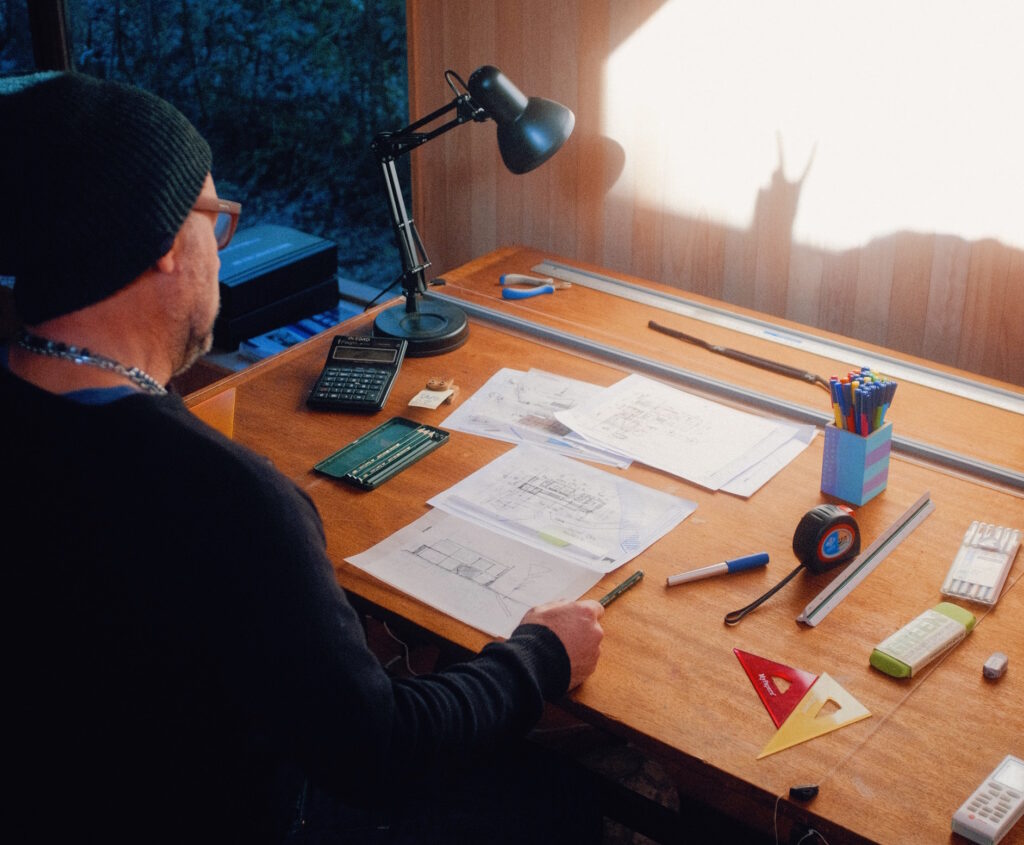
Jason Somers Answers: What Does an Architect Do?
When constructing a building of any kind, it’s oftentimes necessary to hire an architect who can assist with the development project. An architect is someone who has the training and licensing necessary to plan and design buildings. Keep in mind that architects must understand how to design a wide range of buildings, all of which will have unique specifications that the architect will be required to accommodate while designing the building. In many development projects, the architect will serve as the project leader who manages a team throughout every facet of construction.
The work that an architect does can be separated into three main roles, which include design, documentation, and construction. An architect knows how to turn their client’s vision into a fully realized design. Their knowledge of local zoning codes and regulations also ensures that the buildings they design comply with safety regulations and local planning regulations. While the design of the building may be the most important role that an architect has in a development project, these professionals are also needed to make sure that the construction matches the design specifications.
An architect will regularly visit the construction site to oversee the project and sign off on work that needs to be done. In the event that an issue occurs while construction is ongoing, the architect will spend time resolving the issue to make sure that the project remains on schedule. Because of the large number of tasks that an architect is involved with during a development project, these individuals will work with civil engineers, interior designers, urban planners, landscape architects, construction crews, and project managers throughout the entirety of the project. This article goes into detail about what an architect does as well as the different types of architects that can assist in a construction project.
Different Types of Architects

There are five different types of architects that could be hired for a development project. The different types of architects include a design architect, a technical architect, a project manager, an interior designer, and a landscape architect. While an architect can have the expertise necessary to work in all of these roles, many architects focus on one specialization.
Design Architect
A design architect is someone who is responsible for developing the concept and overall design of a building. These professionals begin by identifying what the client’s needs are, analyzing the construction site, looking at the budget, and making a design that fits within the set parameters.
Technical Architect
Technical architects look at the specific details of a project to make sure that the building can be constructed in accordance with the design and that the building will function properly once constructed. They will develop construction drawings and work with the construction crew. For smaller projects, the roles of design architect and technical architect are usually combined into a single role. On the other hand, larger projects require a separate technical architect who can work alongside the design architect.
Project Manager
While project managers aren’t always architects, it’s highly recommended that you select an experienced and reputable architect who can serve as a project manager throughout the entirety of the construction process. Project managers are responsible for creating a work plan, staffing the project, and coordinating between the primary members of the team. A project manager is required to meet with team members on a daily basis, which is necessary to ensure that the project is on schedule and under budget. In order for someone to be a project manager, they will need to have a thorough and comprehensive understanding of the whole architectural process, which allows them to communicate properly with different team members. With this knowledge, they can also solve any problems that arise.
Interior Designers

As for interior designers, these professionals play a critical role when working on larger projects. The interior designer you’ve hired for the project will select different finishes and materials, identify the proper arrangement of non-bearing doors and walls, design the lighting, and position power outlets correctly throughout the building. Along with meeting the client’s needs, an interior designer will make sure that the interior components of the project match local building codes.
Landscape Architect
The fifth and final type of architect is a landscape architect. These individuals are responsible for designing outdoor spaces, which can include gardens and parks. Along with outdoor spaces, a landscape architect will commonly design some of the structures that are going to be placed within the space. While landscape architects are required to have many of the same skills that a standard architect will have, they must also have extensive knowledge of sustainability planning, stormwater management, and planting design. Landscape architects are becoming increasingly in demand as a result of the growing emphasis on green spaces and sustainability practices.
The Stages Behind the Architectural Process

There are four distinct stages behind the architectural process, which include the schematic design, design development, construction documents, and construction administration stages. The first stage is the schematic design stage, which requires the architect to meet the client, learn about the needs of the project, assess any potential construction sites, and create the initial design of the building. The design materials that the architect develops in this stage include models and renderings. These designs will be detailed enough to ensure that the client can assess and approve the design.
Once the design has been approved, the design development stage will begin. At this stage, the architect will provide even more detail to the building plans, which can include details pertaining to the plumbing system, the electrical system, and the HVAC unit. It’s important that architects adhere to environmental regulations and building codes during this stage of the architectural process. During the design development stage, it’s possible that interior design elements will be incorporated into the stage. The client will also need to approve any decision that’s made during this stage.
The third stage of the architectural process involves construction documents, which will need to be prepared by the architect. These documents must include complete construction details that will allow the building to be constructed without issue. The contractors you hire for the project will use these documents while constructing the building. Keep in mind that these documents should be distributed before hiring contractors. Potential contractors will then look at the documents and provide you with an estimate of construction costs. They will then bid for the project, which is when you will make your final decision on which contractors to hire.
The fourth stage of the process involves construction administration, which is the stage at which the building is finally constructed. Depending on what the client prefers and which architects you’ve hired at this point, an architect can be involved at this stage in a variety of ways. In certain situations, the architect may only serve as an advisor or consultant. They could also manage the subcontractors you’ve hired for the project. In the majority of situations, architects will play an active role in the construction process, which requires them to produce new materials, clarify certain details about the building plan, and make addendums to current construction documents.
Workplace of an Architect

The workplace of an architect can differ depending on the role that the architect plays in a development project. Most architects will perform the majority of their duties from a standard office, which is where the designs will be created and many of the decisions will be made. However, an architect must make regular visits to local government facilities, planning offices, and the client’s office. Keep in mind that any architect who manages or assists in the construction process will be tasked with making site visits on a regular basis. Before even designing the building, they must visit every potential site to identify which one works best with the building that the client wants.
It’s common for architects to work with permitting and expediting companies to make sure that the building plans that are provided with an application for a building permit are correct and up-to-date. While a project is ongoing, architects are very busy and commonly work 40-hour weeks. The workplace of an architect also depends on whether they work as a freelance architect or are employed directly by a company. These professionals may work from home, from company offices, or from their own offices. Both local and international travel are oftentimes required for architects.
Architects are among the most important pieces of any development project that involves the construction of a building. Even the design of outdoor space will require a landscape architect. While architects can be involved in any stage of the design and construction process, they are most integral for the design phase wherein their designs dictate what the building will look like and how it will function. If a building is designed by an architect who doesn’t have an ample amount of experience, there are a litany of issues that could occur throughout construction. For instance, the building plans may not be officially approved because of a poor design. If you want to make sure that your building is constructed properly, it’s essential to hire an experienced and reputable architect.

Jason Somers, President & Founder of Crest Real Estate
With over 15 years of professional experience in the Los Angeles luxury real estate market, Jason Somers has the background, judgement and track record to provide an unparalleled level of real estate services. His widespread knowledge helps clients identify and acquire income producing properties and value-ad development opportunities.
Learn more about Jason Somers or contact us.



